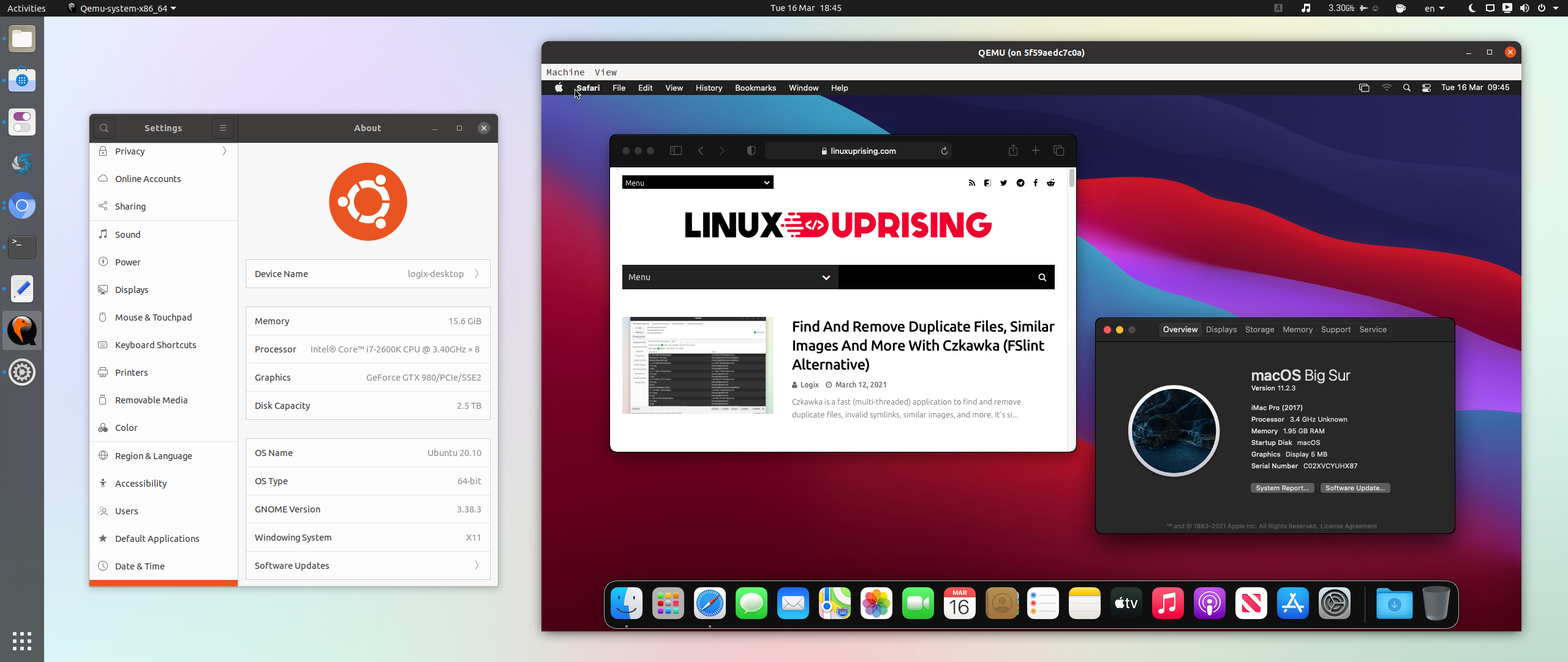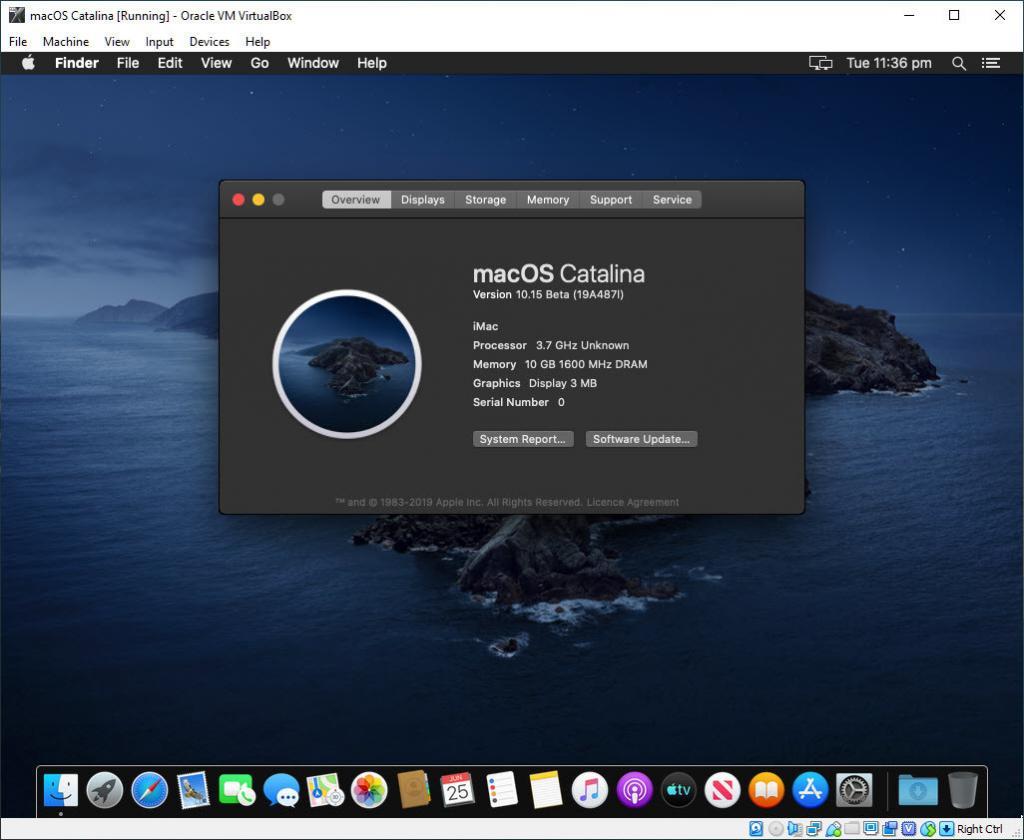- Step 1: The very first step is to simply double click on the VirtualBox dmg file, which will open the below window in mac. Step 2: Clicking on the above icon will kickstart the installation procedure, and will take you to the below window.
- Extract macOS Catalina VMDK Image. Now, you should have downloaded macOS.

Macos Virtualbox 6
Important: I'm writing this when the last version of macOS (and the one I have installed) is Mojave.There is already a script which installs Mojave in a virtual machine here https://github.com/img2tab/okiomov. But if you are curios how to do everything manually to install High Sierra, then this guide may be useful.
After installing macOS Catalina, many ran into a problem when starting virtual machines in VirtualBox. This guide addresses the issue of running virtual machines on macOS 10.15 when using VirtualBox 6.0.12. To fix the problem, you need to open the terminal emulator on a computer with macOS Catalina. There are different kinds of creating Bootable USB. Install MacOS Catalina on Virtualbox; Install MacOS Mojave on Virtualbox; Download MacOS High Sierra dmg File (From App Store) If you are running MacOS High Sierra 10.13.5 and you want to upgrade to High Sierra 10.13.6 then you will need to download the dmg file and you can do it from App Store. On here are the installation files that you need to install.
Install Macos Catalina On Virtualbox On Ubuntu Download

After reading a few articles I ended up with these steps:

- On macOS, download the High Sierra installer (even if you have Mojave installed):https://itunes.apple.com/us/app/macos-high-sierra/id1246284741?ls=1&mt=12
- If the High Sierra Installer starts, quit it.
- Open 'Disk Utility'.
- Click on 'File' > 'New Image' > 'Blank image...'. Or just press cmd+N.
- In the 'Size' field, enter
13 GBand save it wherever you want. - If the image is not mounted automatically, double-click the file you just created to do it.
- Open 'Terminal'
- Run
sudo /Applications/Install macOS High Sierra.app/Contents/Resources/createinstallmedia --volume /Volumes/Untitled. If you changed the value of the 'Name' field in the step where you changed the 'Size', then instead of 'Untitled' the image probably appears with that name you entered. - Once the previous command finished, continue with the following steps.
- Copy the file to some device which you can get access from Ubuntu (external drive or whatever works for you).
- On Ubuntu, open the 'Terminal'.
- Run
VBoxManage convertfromraw <path_to_input_.dmg_file> <path_to_output_.vdi_file>. - Open 'VirtualBox'.
- Create a new machine of Type 'Mac OS X' and Version 'macOS 10.13 High Sierra (64-bit)' (probably others work, but I just tried with that one).
- Once the machine is created, go to the 'Settings'.
- Select 'Storage' and click to add a hard disk. When asked click on 'Choose existing disk' and select the .vdi file you created using
VBoxManage convertfromraw. - Click 'OK' and start the machine.
- Wait until you get to the screen where you have to choose the language. And choose your language.
- 'macOS Utilities' appears. Select 'Disk Utility' and click 'Continue'.
- Select the disk where you are going to install macOS (probably the same you created when creating the machine).
- Click 'Erase'.
- Verify that 'Mac OS Extended (Journaled)' is the format selected and click 'Erase'.
- Once it finishes, Quit the 'Disk Utility'.
- Select 'Install macOS' and click 'Continue'.
- Follow the instructions.
- Once it finishes, the machine automatically rebooted. What you have to do is power it off.
- Remove the installer hard disk from the machine. The one you added previously, not the one where you are installing macOS.
- Start the machine.
- You are going to see a screen where the last line is
Shell> - Run
cd 'macOS Install DataLocked FilesBoot Files' - Run
boot.efi - Continue the installation normally.
References:
This article is written for those who were searching for a detailed and simple for the understanding guide on how to solve the problem of running VirtualBox on macOS Catalina.

After installing macOS Catalina, many ran into a problem when starting virtual machines in VirtualBox.
This guide addresses the issue of running virtual machines on macOS 10.15 when using VirtualBox 6.0.12.
To fix the problem, you need to open the terminal emulator on a computer with macOS Catalina installed and run the command:
VBoxManage setextradata global GUI/HidLedsSync 0
Virtualbox Mac Catalina
This guide covers connecting to a server using the iTerm2 terminal emulator installed on the macOS operating system.
